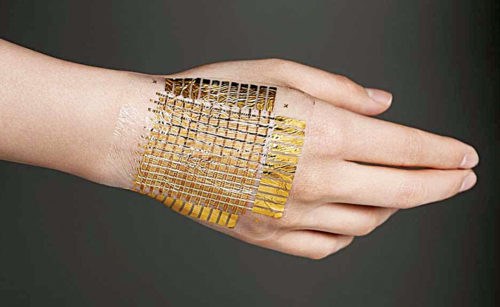
Microelectronic Skins: A New Revolution?

Ulsan National Institute’s electronic skin
News Release, Skin Aging & Challenges – June 29, 2022
Magnetic sensors are widely used in our daily life for assessing the position and orientation of objects. Recently, the magnetic sensing modality has been introduced to electronic skins (e-skins), enabling remote perception of moving objects. However, the integration density of magnetic sensors is limited and the vector properties of the magnetic field cannot be fully explored since the sensors can only perceive field components in one or two dimensions.
A recent study by Christian Becker and colleagues reported an approach to fabricate high-density integrated active matrix magnetic sensor with three-dimensional (3D) magnetic vector field sensing capability. The 3D magnetic sensor is composed of an array of self-assembled micro-origami cubic architectures with biased anisotropic magnetoresistance (AMR) sensors manufactured in a wafer-scale process. Integrating the 3D magnetic sensors into an e-skin with embedded magnetic hairs enables real-time multidirectional tactile perception.
The researchers demonstrate a versatile approach for the fabrication of active matrix integrated 3D sensor arrays using micro-origami and pave the way for new electronic devices relying on the autonomous rearrangement of functional elements in space.
By merging e-skin, micro-origami, active electronics and proper sensor technologies together, this approach frames a general strategy for the fabrication and high-density integration of 3D sensors for vector field detection far beyond the sensing of a magnetic field.
This topic will be further elaborated by Prof. Oliver Schmidt who will join Skin Ageing & Challenges 2022 this November! Stay tuned to learn more about e-skins and other innovations.
Did you like the news ? Please share it with your circle.